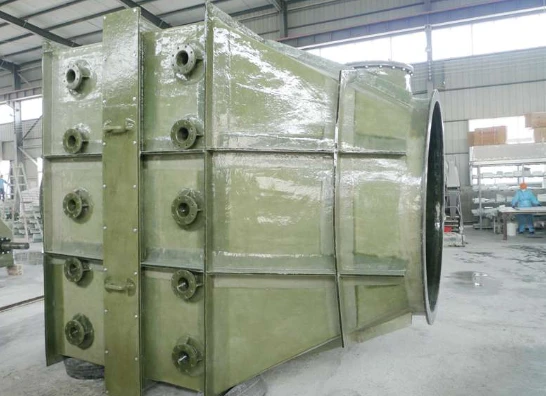
-
 Afrikaans
Afrikaans -
 Albanian
Albanian -
 Amharic
Amharic -
 Arabic
Arabic -
 Armenian
Armenian -
 Azerbaijani
Azerbaijani -
 Basque
Basque -
 Belarusian
Belarusian -
 Bengali
Bengali -
 Bosnian
Bosnian -
 Bulgarian
Bulgarian -
 Catalan
Catalan -
 Cebuano
Cebuano -
 China
China -
 China (Taiwan)
China (Taiwan) -
 Corsican
Corsican -
 Croatian
Croatian -
 Czech
Czech -
 Danish
Danish -
 Dutch
Dutch -
 English
English -
 Esperanto
Esperanto -
 Estonian
Estonian -
 Finnish
Finnish -
 French
French -
 Frisian
Frisian -
 Galician
Galician -
 Georgian
Georgian -
 German
German -
 Greek
Greek -
 Gujarati
Gujarati -
 Haitian Creole
Haitian Creole -
 hausa
hausa -
 hawaiian
hawaiian -
 Hebrew
Hebrew -
 Hindi
Hindi -
 Miao
Miao -
 Hungarian
Hungarian -
 Icelandic
Icelandic -
 igbo
igbo -
 Indonesian
Indonesian -
 irish
irish -
 Italian
Italian -
 Japanese
Japanese -
 Javanese
Javanese -
 Kannada
Kannada -
 kazakh
kazakh -
 Khmer
Khmer -
 Rwandese
Rwandese -
 Korean
Korean -
 Kurdish
Kurdish -
 Kyrgyz
Kyrgyz -
 Lao
Lao -
 Latin
Latin -
 Latvian
Latvian -
 Lithuanian
Lithuanian -
 Luxembourgish
Luxembourgish -
 Macedonian
Macedonian -
 Malgashi
Malgashi -
 Malay
Malay -
 Malayalam
Malayalam -
 Maltese
Maltese -
 Maori
Maori -
 Marathi
Marathi -
 Mongolian
Mongolian -
 Myanmar
Myanmar -
 Nepali
Nepali -
 Norwegian
Norwegian -
 Norwegian
Norwegian -
 Occitan
Occitan -
 Pashto
Pashto -
 Persian
Persian -
 Polish
Polish -
 Portuguese
Portuguese -
 Punjabi
Punjabi -
 Romanian
Romanian -
 Russian
Russian -
 Samoan
Samoan -
 Scottish Gaelic
Scottish Gaelic -
 Serbian
Serbian -
 Sesotho
Sesotho -
 Shona
Shona -
 Sindhi
Sindhi -
 Sinhala
Sinhala -
 Slovak
Slovak -
 Slovenian
Slovenian -
 Somali
Somali -
 Spanish
Spanish -
 Sundanese
Sundanese -
 Swahili
Swahili -
 Swedish
Swedish -
 Tagalog
Tagalog -
 Tajik
Tajik -
 Tamil
Tamil -
 Tatar
Tatar -
 Telugu
Telugu -
 Thai
Thai -
 Turkish
Turkish -
 Turkmen
Turkmen -
 Ukrainian
Ukrainian -
 Urdu
Urdu -
 Uighur
Uighur -
 Uzbek
Uzbek -
 Vietnamese
Vietnamese -
 Welsh
Welsh -
 Bantu
Bantu -
 Yiddish
Yiddish -
 Yoruba
Yoruba -
 Zulu
Zulu
essential tools for working in coal mines and enhancing ...
Essential Tools for Working in Coal Mines and Enhancing Safety
Working in coal mines is an arduous and hazardous occupation that requires not just physical strength, but also the right tools and equipment to ensure safety and efficiency. The coal mining industry has evolved significantly over the years, with technological advancements leading to the development of specialized tools that enhance productivity while protecting workers. This article explores the essential tools used in coal mining and their role in improving safety and operational efficiency.
1. Protective Gear
The primary focus in any mining operation is worker safety. Essential personal protective equipment (PPE) includes helmets, gloves, goggles, and sturdy boots. Among these, helmets equipped with lights are crucial for illuminating dark spaces in underground mines. High visibility clothing is also vital to ensure that workers are seen, especially in low-light conditions. Additionally, respiratory protection, such as masks and respirators, helps miners avoid inhaling harmful dust and gases present underground.
2. Drilling Equipment
One of the most critical facets of coal mining is drilling. Continuous miners and longwall miners are two types of machines used for extracting coal. Continuous miners are equipped with sharp, rotating drums that cut through the coal seam, while longwall miners utilize a more extensive approach, slicing through entire sections of coal deposits. Both types of machinery require a variety of drill bits and attachments that are specifically designed to penetrate different rock formations. Regular maintenance of drilling equipment is essential to prevent breakdowns and ensure efficient operation.
3. Hauling Tools
Once the coal is extracted, it must be transported. Haul trucks and conveyor belts are essential tools for this stage of the mining process. Haul trucks are designed to carry large loads of coal out of the mine, while conveyor belts provide a more efficient and less labor-intensive method of transportation. Proper training in the operation of these vehicles is critical to reduce accidents and improve productivity.
4. Rock Support Systems
essential tools for working in coal mines and enhancing ...

The stability of a coal mine is paramount for the safety of its workers. Rock support systems, including rock bolts, mesh, and shotcrete, are utilized to reinforce mine ceilings and walls. These systems protect against collapses, which are one of the most dangerous hazards in mining. Proper installation and regular inspection of rock support systems can prevent catastrophic accidents and enhance the overall safety of the mining environment.
5. Gas Detection Tools
Coal mines are often plagued by the presence of hazardous gases, such as methane and carbon monoxide, which pose significant risks to miners’ health. Gas detection tools, including portable gas monitors, are essential in identifying harmful gas concentrations. Regular monitoring allows miners to take necessary precautions, such as evacuation or ventilation, thereby preventing potentially lethal situations.
6. Communication Devices
In the chaotic environment of a coal mine, effective communication is crucial. Workers rely on radios and intercom systems to stay connected with each other and with surface supervisors. These devices are essential for coordinating tasks, reporting emergencies, and ensuring that everyone is aware of potential risks in real-time.
7. Maintenance Tools
Regular maintenance of mining equipment is vital to ensure longevity and operational efficiency. Essential maintenance tools include wrenches, screwdrivers, and specialized equipment for servicing heavy machinery. Miners must be trained in proper maintenance procedures to reduce the risk of accidents caused by equipment failure.
Conclusion
The tools and equipment used in coal mining have a profound impact on both productivity and safety. As the industry continues to evolve, integrating newer technologies will further enhance operational efficiency and worker safety. By prioritizing the use of essential tools and investing in proper training, coal mining companies can create a safer working environment for their employees. Ultimately, the goal should be to minimize risks while maximizing productivity—ensuring that mining remains a safe and vital industry for generations to come.









